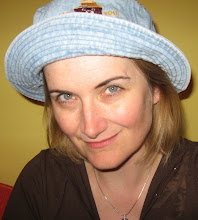My husband calls me as his train pulls into Manhattan's Penn Station. He is slightly panicked. "This is not Grand Central Station!" I say it's OK. Penn is the main New York station for North-South trains and he should get off the train immediately because he's in the right place. Now, all he has to do is walk 30 minutes to the Croatian Consulate where he has an appointment.
"But I only know the way to get there from Grand Central! How can I find the Consulate if I am walking from a different place?!"
I suggest he get directions from someone or take a cab maybe. "Don't be stupid. Most New Yorkers do not know where the Croatian consulate is," he replies crushingly.
As it turns out, he himself has no idea of the actual address of the place. It's never even occurred to him to research it or to carry it with him on a slip of paper for easy referral. After all, he already "knows" how to get there. By landmark. Isn't that how everyone knows how to get places?
Suddenly I remembered a remark his sister had made a few years ago, which I hadn't really understood at the time. She said, "It used to be impossible for me to find my way on the highways in America. Every exit looks so much the same! I could never recognize where to turn." At long last it had occurred to her to read the signs.
I never realized that relying on road signs, addresses, or even maps could be such an alien concept to some people. People who are from a smaller country, a place that's rife with landmarks, where everyone knows where to go because they've been going there all their lives.
Experiences of an American woman who was married to a Serb.
Subscribe to:
Post Comments (Atom)

6 comments:
The title is misleading since there's no correlation between ethnicity and being able to navigate in big cities (provided that the person hasn't been brought up in one).
Your concluding sentence is much more precise, but I would remove the "smaller country part" -- if you take anyone from rural USA, you will see the same pattern of being lost and unable to navigate based on street names and directions.
A few years ago, a kind lady at a gas station about 20 kilometers from the center of Belgrade gave us a list of important street names and intersections - but we soon learned it was useless, as there were no street signs at all. Luckily, I had guessed correctly from that distance that the building with the green neon sign on top was our hotel! I have since developed a map in my mind featuring landmarks, so I can better communicate when I need directions.
Life is simple in USA as everything is marked in plain English while EU uses fancy graphic symbols to bridge language gaps. Blocks numbering might be confusing at the begining but it also makes sense in big cities. Even toilet flushing is unified :-)
Of course in Serbia you have to use landmarks to get around, since half of the streets aren't labelled with street name signs :)
While living in Belgrade, myself, several years ago. An American friend of mine who also had just moved there and already had a car asked if I wanted to go to where they sell a lot of fresh vegetables, open market off the road on the way to the airport. Can't remember what they called it. She had been there once and said she could find it. Because as she said it, "You get off the expressway where the sign said IZLAS" Since we did not speak any Serbian at the time. We did not know that IZLAS is the work for EXIT... And all the exits would say IZLAS!!!!
Actually I can understand this. For instance, I used to live in Dubai. 20 years ago, people would give directions to places by landmark ("Drive past the yellow building, then take the third left at the fish roundabout, and opposite the blue and white villa with a big tree by the gate"). As the city developed rapidly, the government installed signs and named streets and roads, but apart from the main roads, everyone still uses landmarks to describe locations. It's like its the normal thing to do. I lived in Dubai for about four years in three different areas, and I have no idea what street I lived in for two of those areas. The third area was a gated suburban style American community so everyone there definitely knew their street number and house number, but that definitely wasn't the norm.
Cool blog, check mine out if you can!
Post a Comment